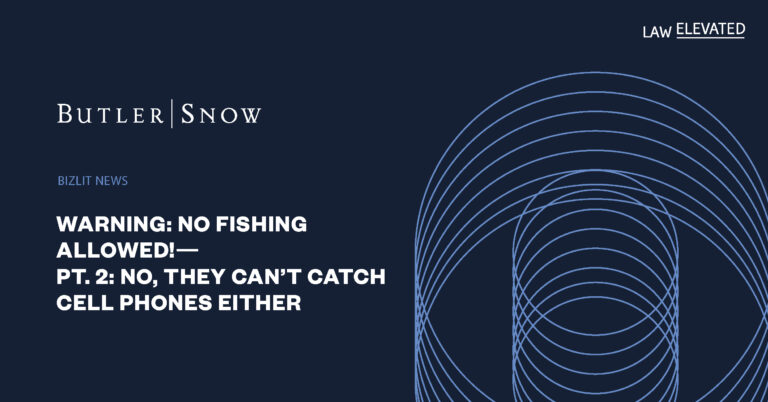Previously, we analyzed the proper scope for discovery requests that asked for employee drug and alcohol test results. In this article, we analyze a far more potent discovery substance—cell phone data.
Everyone has a cell phone, including, especially, and sometimes to the chagrin of their employers, employees. Some have two; one personal and one issued by their employer. Given the ubiquity of cell phones and the extensive data they contain about their owner—including, but not limited to, location, communications, and cell phone use—it has become standard practice for parties to demand cell phone data be produced in discovery.
Whether that data should be produced at all, whose data should be produced, and the proper scope of that data is therefore often fertile ground for disputes between parties, as that data contains a cross-section of information relating to personal privacy, potentially privileged material, company policies, decision making, and more.
The Supreme Court of Texas recently dove into the morass of cell phone data discovery requests and provided employers much needed guidance on how to respond. See In re Kuraray America, Inc., No. 20-0268, — S.W.3d —, 2022 WL 17542911 (Tex. Dec. 9, 2022). It articulated three key principles to guide employers through cell phone data discovery:
- To be entitled to cell phone data, the party seeking it must show that the person whose data is sought was using it at or around the time of the alleged incident and that person’s cell phone use could have been a contributing factor of the alleged incident.
- If the seeking party satisfies that initial burden, an employer may have to produce cell phone data but can limit the scope of produced data to the time that the cell phone could have contributed to the alleged incident.
- If, and only if, this limited first production shows that the cell phone could have contributed to the incident, then the trial court has discretion to expand the period and order an employer to produce more data, but only if there is still some connection between the expanded period, the use, and the alleged incident.
Production of cell phone data outside of this framework is presumed improper. Along with providing much-needed guidance for cell phone data production in general, these rules should also dissuade over-eager plaintiffs’ counsel from first requesting an excessive period of cell phone data in hopes that the trial court will split the baby, cut their request in half, and still order production of data outside the period for the relevant incident. The Court explicitly rejects this approach, and an employer faced with such a request should push back, hard.
Bottom Line:
As always in a case involving the actions of employees, the employer is the big fish—they have the deepest pockets and the most to lose. Plaintiffs therefore often cast about for as much dirt as they can find, regardless of that dirt’s connection to the alleged incident, to attempt to find one crumb of evidence that paints the employer in a bad light, shows it did not follow standard protocols, policies, or mandates (even if that just one time or occurred years before the alleged incident), or is simply embarrassing for the employer (highly likely if the scope of requested cell phone data is broad enough). If a plaintiff can hook just one text, one email, one call, they think they can filet the employer and mount a trophy at trial.
This decision ensures plaintiffs can only fish in small ponds with strict limitations and keeps cases focused on the relevant issues. If a plaintiff asks for cell phone data unconnected and irrelevant to the alleged incident, whether through time or substance, an employer should object and tell the plaintiff to fish elsewhere.
